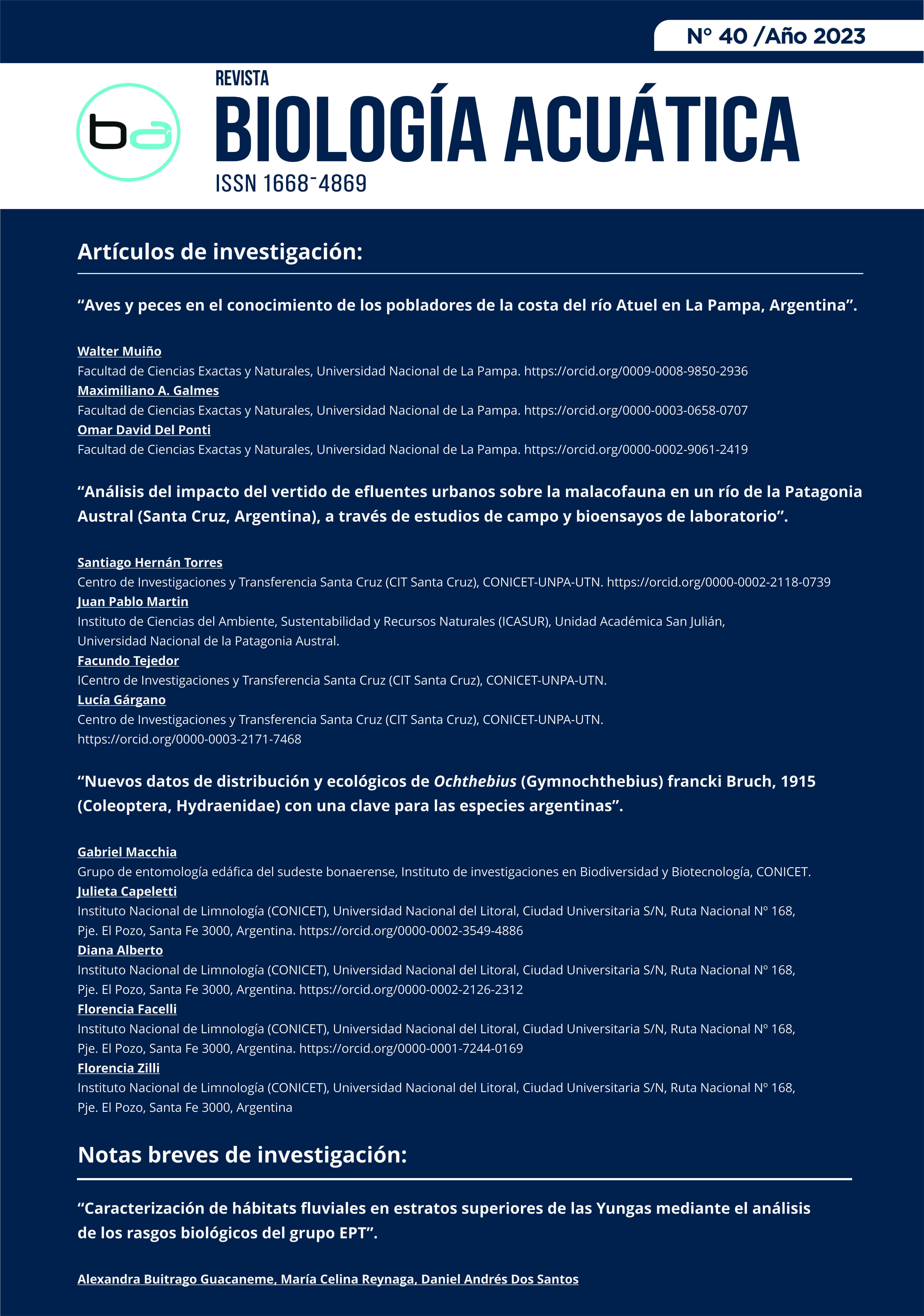Análisis del impacto del vertido de efluentes urbanos sobre la malacofauna en un río de la Patagonia Austral (Santa Cruz, Argentina), a través de estudios de campo y bioensayos de laboratorio
DOI:
https://doi.org/10.24215/16684869e032Palabras clave:
Bioensayos, impacto ambiental, Lymnaeidae, Pectinidens diaphanus, ríos patagónicosResumen
Los cuerpos de agua continentales suelen ser receptores de efluentes de origen antrópico, que ocasionan perturbaciones ambientales que pueden manifestarse con cambios en la composición de las comunidades biológicas. Los moluscos pueden ser considerados excelentes indicadores de la salud de los ecosistemas acuáticos, debido a la sensibilidad que presentan ante las alteraciones en el ambiente. El objetivo del presente trabajo fue analizar el efecto del vertido de efluentes urbanos sobre el ensamble de moluscos en el río Chico (Santa Cruz, Argentina), a través de estudios de campo y de bioensayos en laboratorio. Se realizaron cuatro campañas de muestreo entre marzo de 2017 y marzo de 2019, en épocas con diferente caudal del río. Se establecieron seis estaciones de muestreo: dos estaciones control aguas arriba de la localidad de Gobernador Gregores y cuatro aguas abajo a distancias crecientes del centro urbano. En cada estación se midieron variables fisicoquímicas y se recolectaron cuatro muestras bentónicas utilizando una red manual tipo Surber con malla de 500 μm. Las variables ambientales y los datos de abundancia de los moluscos fueron analizados con métodos estadísticos multivariados. Además, se realizó un ensayo de toxicidad directa bajo condiciones controladas en laboratorio para evaluar el efecto sobre el crecimiento y la supervivencia de Pectinidens diaphanus (Lymnaeidae). Las respuestas de las especies de moluscos, en términos de distribución y abundancia, mostraron una fuerte relación con las diferentes condiciones ambientales en las estaciones de muestreo, diferenciándose de acuerdo con su grado de sensibilidad o tolerancia. Los cambios espaciales observados en la composición del ensamble de moluscos son una respuesta a la sumatoria de fuentes puntuales y difusas que aportan contaminantes al río. El bioensayo permitió evaluar aisladamente el efecto puntual del efluente cloacal de la localidad y demostrar su impacto negativo sobre la supervivencia de la especie bajo estudio.
Descargas
Descargas
Publicado
Cómo citar
Número
Sección
Licencia
Derechos de autor 2023 Santiago Hernán Torres, Juan Pablo Martin, Facundo Tejedor, Lucía G´argano

Esta obra está bajo una licencia internacional Creative Commons Atribución-NoComercial-CompartirIgual 4.0.






















